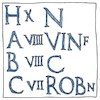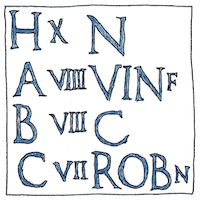Julius Caesar
astronomy

|
Julian calendar
Julius Caesar established by edict the Julian calendar, reforming the Roman calendar in the year 46 BCE. The Romans originally began a month with each new crescent moon, and, like the Etruscans, counted eight days per week, which made each year ten or eleven days short. The Julian calendar year counts 12 months and 365 days, and every four years adds a leap day to February. This calendar gains about three days every four centuries, still having room for improvement.
Intercalaries
Whenever a pontif wished would insert a month between February and March to line up the calendar with astronomical events. Come the Julian calendar an intercalary day (our leap day) would be inserted, (every three or four years) at the end of February.
Local variations
As officials adopted it they adapted it. In the decades after 46 BCE, across the Roman empire, localities retained features of their old calendars. The first days of the year and months, and in some cases the names of the months were out of synch in the Alexandrian calendar, the Asian calendar, the Syro-Macedonian calendar, the Cappadocian calendar, the Cyprus calendar, and the calendars of the cities of Syria and Palestine. Moreover, regions on the edges of the empire, Gaul, Greece, Macedon, the Balkans, and Judea continued to use their unreformed calendars.
Calends, nundinae, and ides
April Fools day would be the Aphrodite calends. The market days were the nundines, the Sunday of their eight-day week. March fifteenth was the ides of March, which Shakespeare’s soothsayer warned Julius Caesar to beware of. He knew where he stood, but it did him little good.



Letters A through H used to mark all days of the year when the year was divided into nundinæ, cycles of eight days. Today all days of the year are marked with a letter A though G for each day of the week. The dominical letter of the year is determined by which day of the week the first day of January falls on. This helps with calculations for the liturgical year, to ensure, for example, that Ash Wednesday falls on a Wednesday, and Easter Sunday falls on a Sunday.
See also in The book of science:
Readings in wikipedia: